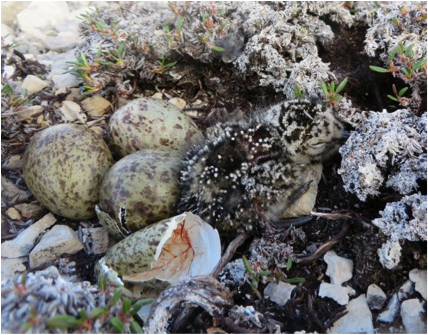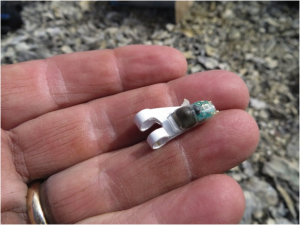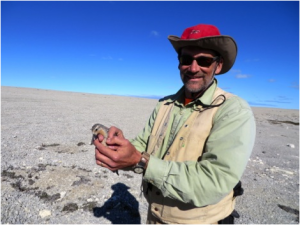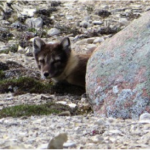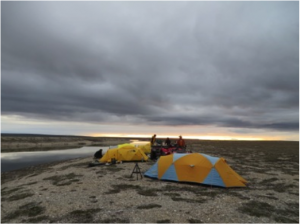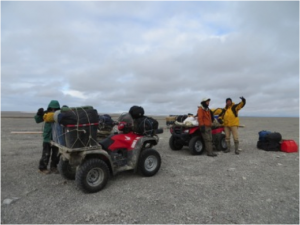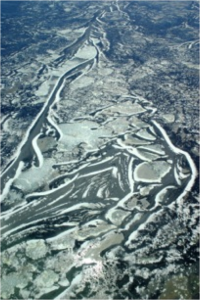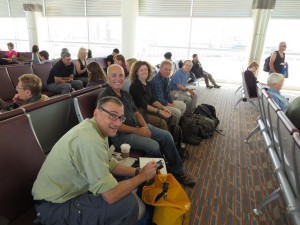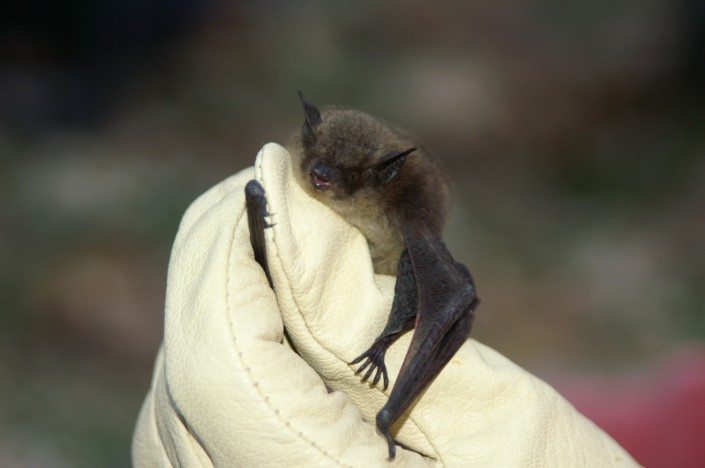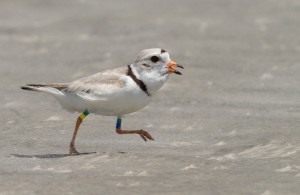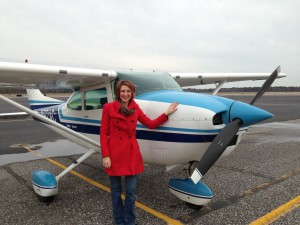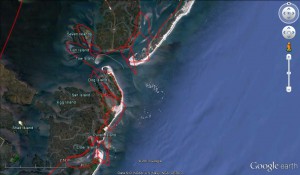Update From the Arctic #6: Mission Accomplished
CWF’s Larry Niles is in Northern Canada searching for Red Knots and other shorebirds in their Arctic breeding territory. We are following him and posting summaries of his blog entries as he reports from the field.

Our second-to-last day in the Arctic was rained out. A constant cold drizzle punctuated by brief downpours confined us to our tents, as the limited visibility would have made it impossible to spot Red Knots or their nests – or approaching polar bears.

But on our last day on Knot Plateau, we woke to a brilliant sunny day. While Rick, Steve, and Mandy broke camp, Josh, Mark, and I drove our ATVs out to the two knot nests we had found two days prior. As we had only banded one parent at each nest, we were hoping to find the unbanded birds this time. But the newly hatched knots and their parents had already left for the nearest wetland, and the incubating bird on the second nest was the bird already tagged with a geolocator. With nothing more to be done, we made our way back to camp to help finish packing.
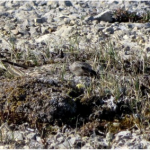
It took two days to return to Coral Harbour and civilization. After staying the night with Josh and his family, we will begin our two-day journey by commercial flight back to Newark, anticipating the shift from 45 degrees to 95 degrees, but glad to be coming home.
The expedition was a success simply because we are all coming home safe and sound. But it was also a complete success because we achieved all of our primary goals. First, we established the presence of a new Red Knot breeding area from the ground. Second, we found a significant number of knots compared to our previous study sites on both Southampton and King William Islands, where most of the knot population had disappeared after the rapid decline in stopovers like Delaware Bay. Third, we finished the fieldwork needed to complete our range-wide mapping of rufa knot breeding habitat, which will help future investigations into Red Knot ecology. And finally, we attached the first geolocators to knots in the Canadian Arctic and set a firm foundation for a more successful effort in the future.
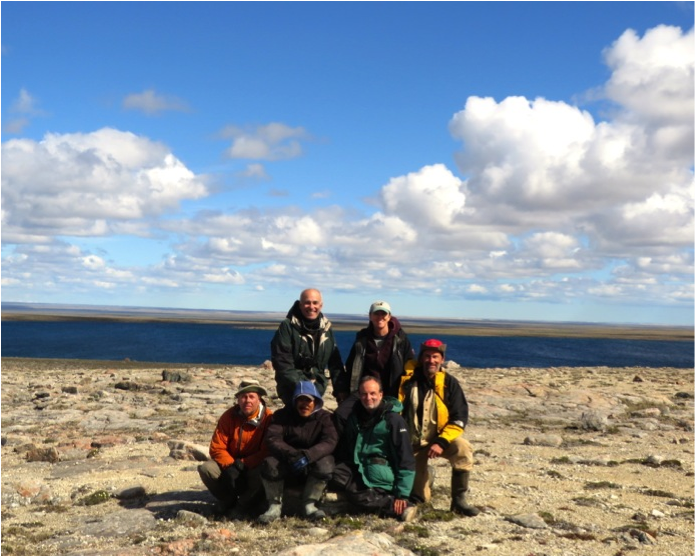
We are grateful to many people. The expedition would have been impossible without the support of Paul Smith of the Canadian Wildlife Service. The Conserve Wildlife Foundation of NJ, the Canadian Wildlife Service, Rutgers University, the Royal Ontario Museum, and The Steve Gates and Julie Fox Foundation all supported the expedition. The Coral Harbour Hunters and Trappers Organization provided essential support. Bruce McKitrick helped us with supplies. Finally we thank Joshua, Suzy, and their family for their hospitality. This expedition was only successful because of all of you.
For the full blog entries, see Larry’s posts: Arctic Rain, Our Last Day, and Summing Up Our 2013 Arctic Expedition.
